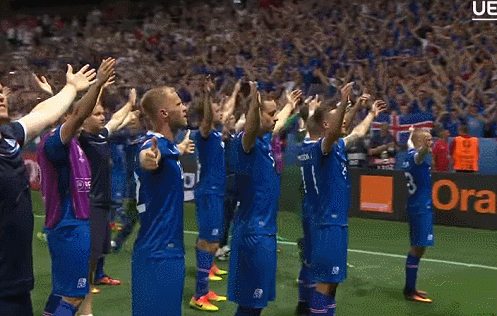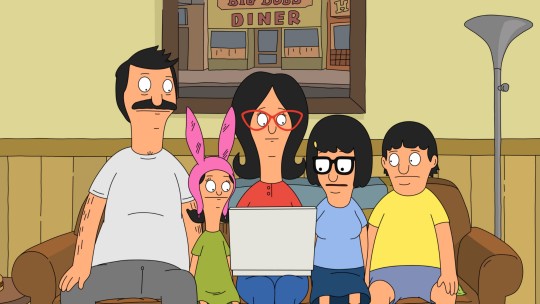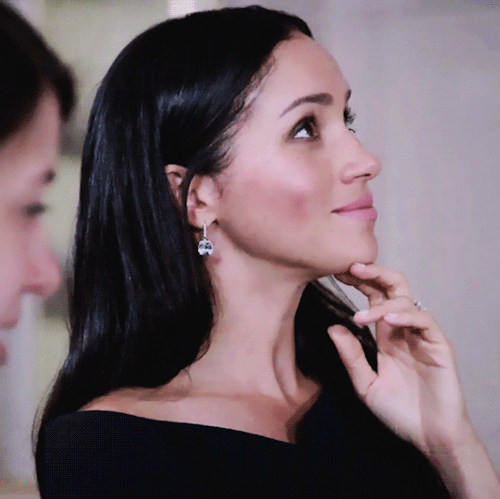Text
Audience Studies-Blog #3

Hello World!!
This blog post will focus on chapters 7-10 of Media Audiences: Effects, Uses, Institutions, and Power by John Sullivan as well as content from Professor’ Goods lectures.
Chapter 7: Reception Contexts and Media Rituals
This chapter is broken into 2 parts
1. Social or situational
2. Time or media use
Social or situation describes media consumption as something that takes place in physical or spatial context, defined as; “concrete, physical dimensions of the location” (Sullivan, p.162, 2013). The social context of media consumption goes hand in hand with space. For example, Sullivan explains how a living room is not merely a four-wall room, it is a space of social contexts where a family gathers to watch television and be with one another (Sullivan, pg. 163, 2013). Sullivan then focuses on the concept of Time. He states media reception coincides with a specific time (Sullivan, pg, 165, 2013). For example, when someone listens to music on the bus or the radio when cleaning their house. The time for media reception is due to a change called “time-shifting” which is defined when the viewer chooses to consume media at a time convenient to them. This what makes smartphones, and Netflix more possible to use.

Kim, K., Cheong, Y., & Kim, H. study the difference in watching sports on television at home versus in a movie theatre in this reading “The influences of sports viewing conditions on enjoyment from watching televised sports: An analysis of the FIFA World Cup audiences in theater vs. home” (Kim, pg. 389, 2016). The study was conducted by testing 240 people randomly who were selected to watch the 2014 FIFA World Cup series on television (at home) and in theatre.

As result, the study was relatively un-researched since the industry began to decline in theatre watching, became less popular. They define presence; as the phenomenon to which individuals develop a sense of physical presence at any location with media and as is a perceptual illusion of non-mediation (Kim et al. 2016). By this, presence is the conceptualized as a multi-dimensional construct that requires realism and immersion. According to Kim, H., realism is the degree to which an individual perceives the naturalness of media content-as if the viewer is experiencing the content directly as part of the audience (Kim et al., 2016).
The study and chapter reveal media reception. In theatres it is a dark, quiet environment with a large screen, therefore is a less social context rather than physical. Watching the World Cup in the comfort of home with friends and family is more of a social context than in theatres. However, neither are time-shifting since it is most likely streamed live both at home and in theatre to watch. This may not be convenient for the family but it is to the provider.
Sullivan also focuses on the context of rituals in this chapter. He states rituals can be “regular, habitual activities” for example, eating lunch while watching Netflix (Sullivan, pg 178, 2013). I watch Bob’s Burgers every morning since it fits with my morning routine. This show suites media rituals along with my time-shifting. It is because of this convenience I watch Bob’s Burgers when I am eating or to pass time, on my television. Applied to social/ physical context, I watch it at home or when I randomly feel the need to escape or distract myself.

Chapter 8: Media Fandom and Audience Subcultures
Sullivan defines media fandom; as how fan communities expand their interactions with media by logging onto discussions on the internet, collecting artifacts associated with media interests, and participating in fan conventions/ social activities (Sullivan, pg. 195, 2013). Fans are invested emotionally with their favorite media by thinking of the messages of the texts, characters, and the plot (Sullivan, 2013, p191). There are 4 categories of a fan
1. the consumer
2. the enthusiast
3. the fan
4. the producer
the “continuum” goes from the viewer (who has no knowledge or connection) – the consumer, to the producer (which is someone who is invested) to the degree they create more fan related content as related to the text. For example, a YouTube video about their reaction to a show, or a blog about the alternate ending.

The chapter focuses on subcultures and people changing their lives to align what they are fans of, for example cosplaying. I would consider myself a consumer in the context of Star Wars, and anime, are the transmedia I grew up with, by this I consider myself an enthusiast since I am very knowledgeable of the background information and have looked into other forms of transmedia related to the original content. For example, after watching Rogue One Star Wars I wanted to find out other peoples final thoughts on the movie and thoughts, so I would look up reviews and find YouTube videos on peoples reaction to the movie.
youtube
https://www.youtube.com/watch?v=JjKG5D9ja6g
The reading Navar-Gill, A. (2018) explains Fandom as “symbolic patronage: Expanding understanding of fan relationships with industry through the Veronica Mars Kickstarter campaign focuses on participatory culture in audiences” (pg, 211). Rob Thomas launched a Kickstarter campaign to solicit production funding following the film Veronica Mars; his cult series. Gill mentions ‘Crowdfunding’ which is “the way audiences fund projects, people come together to support a common goal and they all support either voluntarily, or monetarily” (Gill, pg. 214, 2018). Like how people donate to the Heart and Stroke Foundation is a form of Crowdfunding. Creating a Kickstarter is a popular form in the modern day. An example of fan patronage is the financial contributions by fans to make Veronica Mars. Gill argues the concept is deeper than this narrow case since the symbolic “start-up capital” which the fans provide significant financial contributions which supplemented funding for the financial industry. “Patronage saved many dying artists” (Gill, pg. 212, 2018). By providing them a salary they gain the ability to give artist greater credibility and help increase market value for their work. Regardless of their money, today fan audiences symbolically serve a familiar function to artists. In competitive media markets, challenges face audience fragmentation, fandom acts as a type of start-up capital for artists.
I personally cannot relate to Crowdfunding since university life is a broke life. Considering I don’t haem enough money to donate anything along those lines. Probably once I do have the time and money I would start investing in that.
Chapter 9: Online Interactive Audiences in a Digital World
This chapter focuses on audiences being more prominent online. This is how people shape their own media that they receive instead of passive receivers of media. 21st Century audience “become more actively involved when shaping own media and network usage” (Sullivan, 2013, p.218). Henry Jenkins examines ‘participatory culture’ as the way “people are invited to actively participate in the creation of new content” (Sullivan, 2013, p.219). The rest of the chapter looks at similar trends, such as YouTube, a form of participatory culture since it is a platform for creating your own videos an circulating it. YouTube is one of the numbers of “online services designed to allow users no technical knowledge to upload a video as well as other uses” (Sullivan, 2013, p.220). on YouTube, there are compilations and edited videos of their favorite snippets of their favorite show. This is how I got into other shows by watching these little snippets as a teaser of the show. This simulates the way audience utilize the internet to fuel own views.
https://www.youtube.com/watch?v=THyTaWV8_Wk
(I love this show so much)
In the reading by Wasike Framing News in 140 Characters: How Social Media Editors Frame the News and Interact with Audiences via Twitter, he defines SME (Social Media Editors) as “tech-savvy journalists appointed by news agencies to act as the newsroom liaisons to the digital word” (Wasike, pg. 6, 2013). The study shows the uses of journalist media frames from Twitter. Media frame is broken into 2 categories (Wasike, pg. 9, 2013)
1. Generic; broad and structural themes and are limited to conflict, human interest, and economic impact, responsibility and morality
2. Issue Specific: more subjective, flexible, vary depending on the content analyzed and if their opinion changes based on the prevailing context
The study focuses on how SME’s utilize Twitter to paint certain stories, this was done by analyzing 950 tweets (Wasike, pg. 7, 2013). It found a difference between TV news and Print Media related SMEs in terms of what the tweets were focused on and then broke down the media frames used. A primary focus – human interest frame.
I do not use Twitter so I cannot relate to what was mentioned in the article, however, I do believe we are all susceptible to SME since many use Twitter as a source of news. This is both participatory culture and news as one.
Chapter 10: Audience Agency in New Contexts
The final chapter..
This chapter focuses on the reiteration of earlier topics, and the discussion of transmedia productions and paratexts. Transmedia productions; are the “coordinated use of multiple media platforms or technologies to craft a narrative (Sullivan, 2013, p.241). Paratexts; are the” textual material that surrounds media narratives and informs us about them” (Sullivan, 2013, p.241). By this, it means to use multiple faucets to create one large world and a transmedia franchise like Marvel (Disney). As I said, I investigate forms of transmedia texts in the form of fan videos. I am a consumer of Marvel definitely, I have seen all the movies and I can name all the conflicts, characters, plots, and even the back story of each superhero. As an audience member using transmedia adds another layer when interacting with different shows and movies.

On page 242, Sullivan explains that the increase of “more screens” such as smartphones, laptops, is a dramatic shift in one's audience experience. I am susceptible to this because I have my phone on me due to the normalization in society. Connecting this to Bob’s Burgers on Netflix (explained earlier) this is an application on multiple media platforms such as my laptop or phone, this allows users to download media for a pre-set amount of time. I utilize this function almost every day, I watch YouTube on my phone at least once a day, or use Netflix when I a home. This has revolutionized my audience experience yet has ruined my social life.
The reading is done by Anthique, A. (2018) the Dynamics and Potentials of Big Data for Audience Research looks at the dynamics and potentials of the data paradigm in the era of user-generated content and commercial exploitation (Anthique, pg, 60,2018). This proposes the major dynamics of data content to numerology. The evolution of big data applications and new audience formations from the internet signifies how we find ourselves studying data about audiences, instead of audiences itself. It is very tempting to sit with my laptop and engage in news from around the world. It is this immediate access to a database and receives visualizations of audiences that form specific content. Anthique describes this as a danger because essentially human concerns of audiences can be forgotten in the sea that is big data. Therefore, our concern of meaning can be served as a goldmine of data deposits without our own. They had made ‘mass effects’ research driven by assumptions and tests correlated to data garnered from unethical operations. Proponents of active audience theory have been studied for over 50 years, from the digital aftermath of cultural studies to what we now know as textualized radical numerology- which began with the online culture of consumption.
Resources
Athique, A. (2018). The dynamics and potentials of big data for audience research. Media, Culture and Society, 40(1), 59-74.
Kim, K., Cheong, Y., & Kim, H. (2016). The influences of sports viewing conditions on enjoyment from watching televised sports: An analysis of the FIFA World Cup audiences in theater vs. home. Journal of Broadcasting & Electronic Media, 60(3), 389–409.
Navar-Gill, A. (2018). Fandom as symbolic patronage: Expanding understanding of fan relationships with industry through the Veronica Mars Kickstarter campaign. Popular Communication, 16(3), p211-224.
Sullivan, J. L. (2013). Media Audiences: Effects, users, institutions, and power. Thousand Oaks, CA: SAGE Publications.
Wasike, B. (2013). Framing news in 140 Characters: How social media editors frame the news and interact with audiences via Twitter. Global Media Journal - Canadian Edition, 6(1), 5-23.
0 notes
Text
Comm 3P18-Blog #2
HEY!!
Welcome back to my blog!! I hope everyone had a great reading week and has caught up on the readings

Coming back into reading week, Professor Good talked about Media Audiences: Effects, Users, Institutions, and Power-covering 3 topics: DEcoding and Interpreting Mass Media Texts, Media Ratings and Target Marketing, and Uses and Gratifications
I will cover my audience experience from throughout this weekend and apply it to chapters (6-8) of the textbook Audience Studies, John L. Sullivan. Throughout the week and even now, everywhere we look, it is spooky. Yess Halloween is upon us.

I am a huge horror fan, no matter what season I love horror films. People in high school always thought I was a goth because I always enjoyed dark things. Something about the feeling of fear that it impacts on a human is quite thrilling. Recently, on Netflix there is this new series called Haunting of Hill House. My friends have been telling me about reviews on it saying people have fainted watching it or got queasy watching it. Some felt as though they were seeing things after watching the Netflix series.

After watching it TWICE I didn’t even flinch. It was not scary, I really appreciated the amount of effort the producers put into the makeup and making of the ghost. So anytime there would be something scary that pops up, I don’t even blink, I take it in.
Even my parents thought the show was super messed up and super scary, after hearing this from my parents and having watched the show I asked them what they find most scary about it and they said it is how it all adds up in the end.
Professor Good discusses “Uses and Gratifications” in class the first lecture from reading week.
“uses and gratification see the audience as: active, selective, discriminating, and self-aware”(Good, 2016).
On page 108 (Sullivan, 2018) it mentions Meeds and Farquhars study as an example of uses and gratifications in relation to audience studies. It also mentions how uses and gratification theorists look at individuals use of media instead of considering the actions upon outside forces. Which applies today-millennials use social media to interact with one another whereas the older generation values face to face interaction. I personally wish I could engage in more face-to-face contact, its come to the point where everyone has social anxiety because they'd rather keep to themselves and on their device than to have to deal with a conversation with someone. Since I was a child my grandmother taught me healthy boundaries-either way she would pinch me or slap my hand if I reach for my phone in her presence. So now when I am in a group of people I stay off my device, now I see everyone else on their phone.
Elihu Katz talks about functional audience inquiry which is “why people chose to consume various media messages. Katz approach to Uses begins with the assumption that messages of media cannot ordinarily influence an individual who has no “use” for the psychological and social contexts in which the person lives.” (pg 109). He also argues audiences have their own personal set of values, beliefs, and needs that are shaped by their social environments and media exposure.
On October 9th, Kanye had a dinner date with Donald Trump. I watched this with my parents and we saw the dynamic between someone who is an extremist - Kanye interact with someone as arrogant as Donald Trump. Throughout the time of the lunch, it was Kanye that was doing most of the talking. I watched it through live news hoping to gain knowledge of the type of president Kanye will be. However I realize all celebrities and rich people of the United States like Trump for the reason, he gives them money and he is the reason they are rich.

Professor Good discussed 5 basic assumptions of Uses and Gratifications (p113)
1. The audience is active, and the media is linked to the goals of the individual
2. The audience takes a lead in linking need gratification with specific media choices. Individual chooses various types of media to satisfy a particular need
3. Mass media compete with other forms of need satisfaction. For example, having a conversation with your friend while playing Fortnite.
4. The audience is aware of one's own need and motivation when selecting certain types of media and to report needs accurately to media researchers.
5. Scholars utilize uses and gratification approach without judgment on individuals media choices. They try to understand audience orientation to types of media in own version.
and example of this is when recently there has been drama between Nicki Minaj and Cardi B. This seemed to be a very pressing issue since it is everywhere on the news and everywhere I go people ask if I heard about what Nicki said or what Cardi said.

https://www.nme.com/blogs/timeline-cardi-b-nicki-minajs-ongoing-feud-2395194
While my friend and I were watching the video we would clarify what the situation is with each other, as if we are gossiping along with the YouTubers. Most of the time I spend on Twitter is not too long however celebrity news pops up as a notification and depending on my interest in the issue I would engage in it. I learned the issue between Cardi B and Nicki Minaj from all over Twitter and word-of-mouth. It is the satisfaction that an individual feels when uses and gratifications are fulfilled, they experience being an active audience member.
https://www.youtube.com/watch?v=6d1-gGFx_0Y
Sullivan focuses chapter 6 on Stuart Halls research of the dominant ideology. Which are the subliminal messages people pick up when viewing certain media and decoding the message. Hall argued people perceive messages through encoding and decoding. “encoding messages is when the creator places and idea, event or experience in a format that is meaningful for the audience” (p 140). once the message is received the audience decodes it; which is the process of perceiving the message. Hall thought people decode 2 types of messages (pg 141).
1. The denotative: message is literal of commonly held meaning
2. The connotative: meaning is up for interpretation by audience.
Polysemic texts: texts interpreted in different ways by different viewers (pg 142).
It is up to the audience to follow the hegemonic meaning or negotiated position. Example the cold war, soldiers follow dominant ideology without question. This is broken into the negotiated position of real life.
References
Campbell, Z. (2018, October 30). Retrieved November 01, 2018, from https://www.youtube.com/watch?v=6d1-gGFx_0Y
Hunt, E. (2018, October 31). Retrieved November 01, 2018, from https://www.nme.com/blogs/timeline-cardi-b-nicki-minajs-ongoing-feud-2395194
Sullivan, J. (2013). Media Audiences: Effects, users, institutions and power. Sage Publications Inc., New York, NY.
0 notes
Text
Comm 3P18-Blog #1
Greetings all,
My name is Jasmine Mohammed, thank you for visiting my blog! This blog will consist of content I have learned in Jennifer Good’s Audience Studies class.

Entering the communication field has taught me the importance of audiences. Audience is defined as “the act or state of hearing; a formal hearing or interview; an opportunity of being heard; a group of listeners or spectators; a reading, viewing or listening public; a group of ardent admirers to devotees” (Good, 2016).
One of the readings talked about the influence of mediated personalities on audiences. The article by William Brown (2015) talks about how he has noticed that the past 60 years, an increase of mediated personalities or “personae” has affected audiences. For example, from the iconic Aubrey Hepburn to recent stars such as Kylie Jenner. In seminar we talked about how a lot of girls remember the band boy fandom, and how obsessed girls were with members of boy bands. A specific example that I experienced when I was around 13; I loved the band One Direction and all my friends loved them as much as I did and we would “claim” the members as our boyfriends, like since I liked Zayn I had Zayn and my friend like Liam so she had Liam. It’s kind of scary to think about how people can get so attached to a personae, its now a cultural and social norm for people to bestow this ‘god like’ image to these individuals. These figures are worshiped which causes a rise in attention to the media, raising social influence of these figures among the public. These individuals hold such great power which have either positive or negative impact to social practices as well as a huge audience range with different ethnic, geographical and socio backgrounds. This reading by Brown will be present, we will be expanding on his ideas throughout my first blog post as well as more personal experiences.
To start off I want to share this video, as it is an example of the 4 Processes that audiences become one with and by media personae.
youtube
https://www.youtube.com/watch?v=e9SNY-k9its
This summer I went to Anime North because I have always wanted to go since I was 12. I experienced that it really is a convention for huge nerds and I felt a sense of belonging. Seeing regular people cosplay as my favorite characters was an amazing experience because you can see the amount of detail and work they put into their costume I felt I HAD to take a picture with them. I have also cosplayed when I was around 14-16 years old. As a person who cosplayed I understand the idea of personae, of being someone you're not and into this character you choose. It makes how people can interpret curves and clothing pieces that does not exist in our world. This is a example of media personae! There are more examples of personae that I want to touch up on.
Here is a picture I took this summer with a cosplayer dressed as Saitama from ONE PUNCH MAN!!!

According Merriam-Webster dictionary, “Persona” is defined as “the way you behave, talk, etc with other people that cause them to see you as a particular person; the image or personality the person presents to other people” (2016).
Horton and Wohl (1956) described “personae” as the plural for “persona”, as attributing to an individual on television that viewers relate to.
Transportation (TAKE ME AWAYYY)
Transportation involves the story transporting the individual to the world of the show. In the Green reading it states “a highly transported individual is cognitively and emotionally involved in the story” (Green, 2004, p.247). He also explains although the individual is being transported by the story, they are growing with the characters (as if a friendship or bond with the characters). Being so attached to the story does not also mean there is an attachment to the to characters, since you are only watching the story and are not involved. Putting yourself in the same story as the characters gives you a greater meaning out of the media that is given.
A show that has really transported me is Friends (1994) through the characters and the story line as well. I think the characters are full of personality and dynamic yet so close. As an audience member every time I watch it I see how the environment and the elements of the story that ill affect the character.

So yes.. William Green (2014), you were right. The characters have grown on me (Joey, Rachel, and Pheobe), however I always go back to that show because I am transported to each characters life at work, home, personal love life, and social interactions, feeling like I’m being engulfed by the characters persona.
Parasocial Interaction (Do the feelings reciprocate?)

Whether in real life or through fandoms, we’ve all experienced this. It is always a one sided bond with the media figure. Brown (2015) defines parasocial relationship as someone who would start watching engaging in a show or movie, and soon create a self-defined relationship. A benefit of this that I noticed is that with parasocial interactions you get a sense of personal gratification mentioned as uses and gratification! However a negative aspect of this is the potential of self-comparison with the character causing a negative self image, by doing this you compare yourself more and more with the character.
Okay, embarrassing story time to give an example. I too was once.. a.. parasocial relationship survivor.
I used to LOVE the show Suits (2011), and I had a bonding moment with the character Rachel Zane. I thought she was a powerful influential woman and soon that bonding moment turned into a relationship. I would dress like her, talk like her, I would imagine if I were a character in the story how I would look and what I would do. There was a time when she was heart broken by her boyfriend and I felt her pain, I felt like crying along with her. Of course Suits is a drama but the best issues presented are the ones that involve the characters personal affairs (not the business side). There was a time where I stopped watching the show because she is no longer a character in the show however, as a celebrity I am guilty of stalking Megan Markle.

SHES SO PRETTY!!
Identification (same)
After parasocial relationships, next comes audience identification. Kelman (1958) explains identification as the ongoing process of social pressure, saying as an audience member we internalize vales, attitude, and beliefs of the person we see in the show. I think this is an interesting process since we become influenced by people whom we never have met face to face or have interacted with (relating to parasocial interaction). Brown (2015) says that by embodying these attitudes, values, and beliefs; we are adapting to Sigmund Freud's adaptation of identification-how children take after their parents. These characters stick to us making us feel like them, without having a single conversation with them.
Brown (2015) also describes that as media consumers, we immediately empathize and put ourselves in their position of our favorite persona, allowing us to relate and feel the same way, adapt to their lifestyle which makes us love them more as it makes them seem realer. This separates and makes audiences more involved with the persona (parasocial interaction). It is easy for a viewer to identify with a persona and can be persuaded into thinking that the character is watching them.
I felt this way when I was around 6 when I used to watch Pokemon after school (man times were so much simpler). That show always made me feel refreshed even to this day I loved how it makes me feel like a kid again.
youtube
After watching this show for years and growing up with these characters and Pokemon, I have a greater appreciation for the smaller things in life, and animals (life form). I found myself as a kid collecting rocks and painting them as pokeballs, and I used to dress up like Dawn.

Worship (you are god)
Worship is the most intense, highest involvement of the audience porcess. Most present for most celebrities, the idea of audiences venerating celebrity personae till the involvement becomes patterns of worshiping.
Can I get an amen?

Brown (2015) saw this as an unhealthy type of parasocial interaction between an audience member and a persona, the status of the celebrity promotes the wealthy lifestyle which becomes fandoms, obsessions, cults. The difference between parasocial interaction and worshiped relationship is to a psychological degree what the person is involving themselves in. For example I remember when the “belieber” fandom was a thing. I was never a belieber but I remember the girls that were beliebers were hardcore fans, I couldn’t have a single conversation without them talking about Justin Bieber. A human especially in today's society should not be worshiped or seen as a god because our egos have grown so big we cannot decide if we are benevolent or omnipotent. Justin Bieber was viewed and worshiped even when he was still considered a kid.

Conclusion
I hope you guys enjoyed my first blog post. To sum it all up;

transportation, parasocial interaction, identification an worship all come from “cognition, emotions, imagination of the media consumers” (Brown, 2015, p.267). As our relationship deepens with characters, so does our involvement with the audience. Brown has done a great job explaining these processes, I hope my examples did not make you cringe. Thank you for taking your time with this ya’ll.
Until next time,
Peace out!
References
Brown, W. J. (2015). Examining Four Processes of Audience Involvement With Media Personae: Transportation, Parasocial Interaction, Identification, and Worship. Communication Theory, (3), 259. doi:10.1111/comt.12053
Sullivan, J. (2013). Media Audiences: Effects, users, institutions and power. Sage Publications Inc., New York, NY.
0 notes